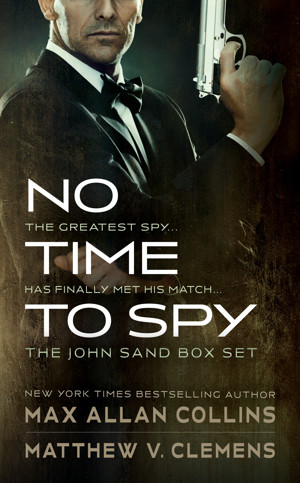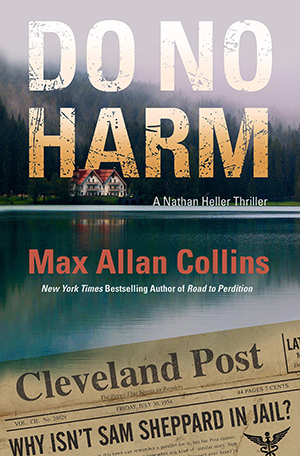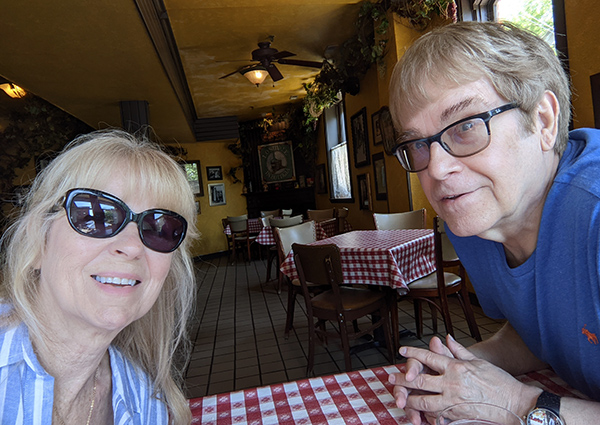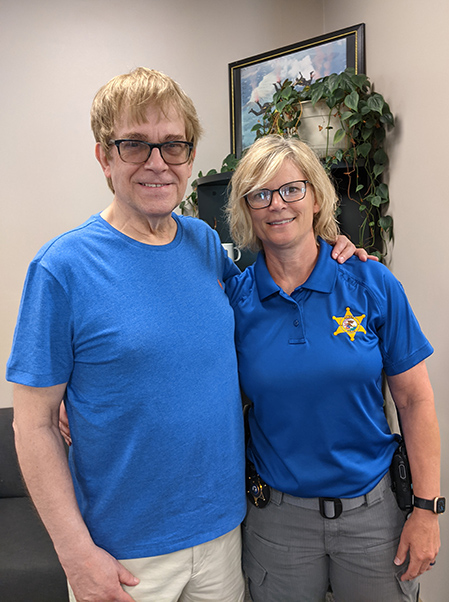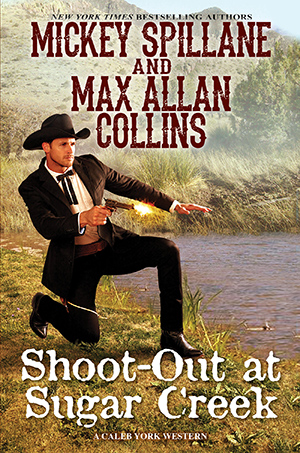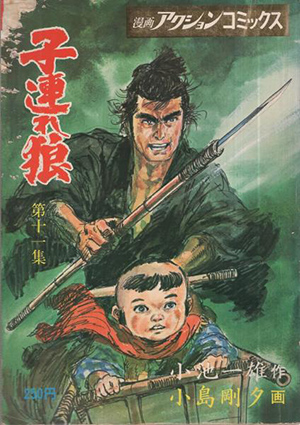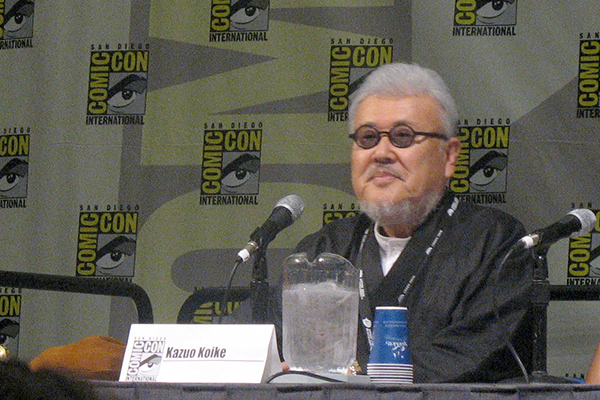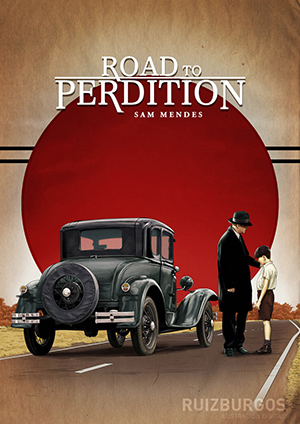Finally, our book giveaway of No Time to Spy, the massive collection of the John Sand trilogy, has arrived. We have only five (5) copies to give away. As usual, you agree to write an Amazon review (and/or at any other review site, like Barnes & Noble, Good Reads, your own blog, etc.). [All copies have been claimed. Thank you for your support! — Nate]
We really need the reviews, as No Time to Spy has stalled out at a meager 18 ratings. By way of contrast, the new Quarry’s Blood already has 34 (and thank you for that!). Now, I understand John Sand and Quarry are two different animals, but the individual titles in the Sand series have fared very well (229 ratings for Come Spy with Me for an average of four stars).
If you have read the trilogy as it came out, novel by novel, and liked what you read, please consider reviewing the collection at Amazon to help build up interest. Right now it’s looking like the fourth Sand, resolving a hell of a cliffhanger (if Matt Clemens and I may be so bold to suggest), will never be written.
On this subject – and I think I’ve made this clear before – I am well aware that not everything I write appeals to the same group of readers. Right now I’m working on The Big Bundle, the new Nate Heller novel (about 2/3’s in), and am cognizant of the fact that what some readers relate to in my work is my first-person voice. That’s not just one voice, of course – Mike Hammer and Quarry and Heller are not the same voice, but they are variations on my voice and reflect whatever facility I may have in first person. Some readers may not relate as well to a third-person voice, as used in John Sand, Nolan, the Perdition prose novels and more.
And some people who like, say, Quarry like to lambast me when I write anything else. But I need to stay fresh and nimble and that requires writing different things, although mostly I work in suspense/mystery. But I get it. I have writers whose work I like who occasionally throw me a curve I can’t catch. One of my favorite writers is Mark Harris – his baseball trilogy (The Southpaw is the first, Bang the Drum Slowly is the most famous) is to me a marvel of first-person storytelling.
Harris, who I met and then corresponded with, saw himself as a literary writer and throughout his career he tried all kinds of things. Usually I at least like what he did, at times I loved what he did, but on a few occasions I didn’t connect with him at all. When someone dislikes my work in general, I like to say the reader and I are not a good fit. When someone who likes some of what I do complains about a work that doesn’t work for him or her, I chalk it up similarly – that reader isn’t a good fit with that particular work.
A good example is the Antiques series that Barb and I write together. These are cozy mysteries, albeit somewhat of a subversive take on that sub-genre, told in the first person by two narrators. The novels combine what we think are good solid mysteries with a lot of fairly off-the-wall humor. A surprising number (surprising to me) of readers of noir-ish things of mine like Quarry, Heller and Hammer also like these books. But I completely understand the readers who, despite generally being fans of mine, don’t cotton to Brandy and Vivian Borne.
Writing this new Heller raises a number of issues in my aging mind. I understand that some fans of my Quarry and Nolan and Hammer novels don’t respond to Heller, despite my own feeling that the Heller saga is my signature work. While the Heller books have the violence and sex for which I am known and loved, they also are long books…this one will be 80,000 words and I believe Stolen Away was 125,000 words…and they are more detailed and explore the historical crimes they’re dealing with in depth. The violence and sex stuff is there, but not every other chapter.
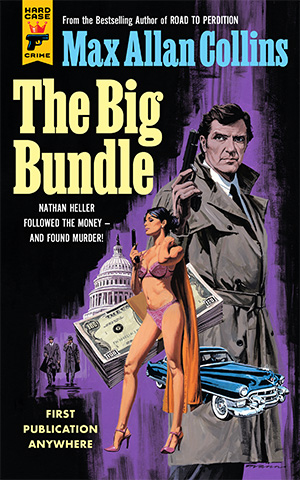
Another factor I’m facing is the degree of difficulty. Even now I can write a Quarry novel in a month. The real-life case I’m dealing with in The Big Bundle is not as complicated (or frankly as famous) as, say, the assassination of Huey Long (Blood and Thunder) or the disappearance of Amelia Earhart (Flying Blind). But at this age I have to review the research extensively before working on a chapter covered by that material; this includes new research, beyond the several months of reading that preceded the writing, stuff I’m picking up on the fly.
I also find I am re-plotting several times as I go along. That happens with any novel, because I don’t let my synopsis dictate things – if characters want to do something different, I let them. If something occurs to me as an interesting turn to take, I take it.
That’s all well and good, but in a Heller novel I am dealing with history. The first book, True Detective, in the very title established the rules: these would be true stories. I allow myself some liberties – time compression and occasional composite characters are typical elements in a Heller. But mostly it’s just the facts, ma’am, presented in the context of a private eye novel and striving to come up with the truth…most happily (as has been often the case) with a new solution to a controversial real mystery.
What I am up against now is that pesky degree of difficulty. I think I’m writing as well as ever (possibly self-delusion, but it keeps me going). With Heller, however, the amount of time for me to feel I get it right is at odds with the speed at which I was long able to work. I understand that’s a function of old age; but knowing that doesn’t make it any easier. Just annoying. Frustrating.
I have committed to one more Heller after this one – the two books will complete the cycle of Heller novels involving JFK and RFK. Bobby Kennedy isn’t in The Big Bundle much, but he’s a vital element; next time he will be the focus.
I have been expecting to spend my remaining writing years with a focus on Heller. I am nearing the end of the Hammer manuscripts, and I’ve written and published endings to Nolan and Quarry (two each!). But I question whether I am up to the Heller degree of difficulty in relation to how much time it takes to arrive at what satisfies me.
On top of this are newer projects – like Fancy Anders and John Sand – that interest me. I am extremely proud of The Many Lives of Jimmy Leighton; it’s one of my best books (thank you Dave Thomas!). Barb and I are developing a standalone thriller, and I’m doing three novellas for Neo-Text on unlikely American heroes. There a few more Spillane/Hammer books left to write.
But Heller is what I’m proudest of. Probably the deciding factor will be if I can’t hit the mark, can’t write about him in a way that pleases me.
One interesting thing about Heller is how writing the books can lead me into rewarding areas that I didn’t anticipate. In Big Bundle, I decided to do a scene in St. Louis at a club where Chuck Berry was playing. Berry isn’t being used as a famous historical character in the novel – it’s just me looking for a fun setting for a scene.
That’s always a problem in private eye novels. The form is basically a series of interviews with witnesses and suspects – look at The Maltese Falcon. So I try in Heller (well, in all novels that touch on the PI form) to use interesting locations. With an historical saga like Heller’s, it’s an opportunity to suggest the times and put the place in context – using famous defunct restaurants, for instance.
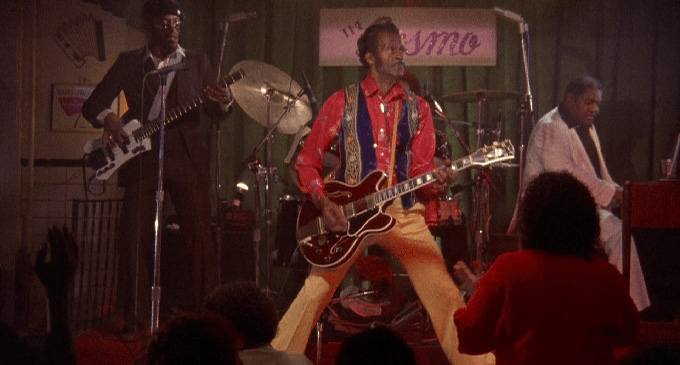
I read about the Cosmopolitan Club, where Berry basically put rock ‘n’ roll on stage for the first time, and found that the documentary Hail! Hail! Rock ‘n’ Roll (1987) had refurbished the defunct East St. Louis club for a mini-concert celebrating (and sort of recreating) Berry’s tenure there. I got caught up in the documentary and it got me interested in Berry and his music, which I had frankly (stupidly) taken for granted. On reflection, I was reminded that everything from the Beach Boys to the Beatles came from him, and recalled how many, many songs of his my various bands had played.
So I sent for another documentary (Chuck Berry, 2018), and several books, and three CD’s. That’s a bonus that comes out of the Heller research – I stumble onto things that are only tangential to the book at hand but that roar into the centerstage of my personal interests.
If you’ve never seen Hail! Hail! Rock ‘n’ Roll, by the way, you haven’t lived till you watch Chuck Berry schooling Keith Richards on how to play rock ‘n’ guitar. One particular sequence is singled out as demonstrating how difficult Chuck could be; but for those of us who’ve played in bands, we know: Chuck was right.
One bittersweet aspect was my realization that I had blown a great opportunity. My son Nate lived in St. Louis for better than half a decade, and during that time Barb and I visited him (and later, Nate and his wife Abby, and later than that, grandson Sam too) often. Meanwhile, hometown boy Chuck Berry was playing once a month at Blueberry Hill, a fantastic club in the Delmar loop. And I – we – didn’t bother to see him.
As Fats Domino would say, “Ain’t that a shame.”
This Paperback Warrior review of Quarry’s Blood appeared on my birthday, March 3, and I couldn’t ask for a better present.
The New York Times recommended ten books last week, and Quarry’s Blood was one of them.
Finally, Daedalus Books has the hardcover of Eliot Ness and the Mad Butcher for $6.95.
M.A.C.
